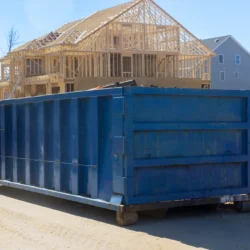In commercial real estate, informed decisions are built on a foundation of reliable information. Property Condition Assessments are one of the most valuable tools for investors, building owners, asset managers, and lenders to make strategic choices with confidence. By evaluating the physical state of a property, these assessments reveal hidden risks, forecast future expenses, and help stakeholders avoid costly surprises down the line. Whether it’s an acquisition, refinancing, or portfolio management, understanding a building’s true condition is not a luxury — it’s a necessity.
Understanding the Role of Property Condition Assessments
Property Condition Assessments provide a comprehensive evaluation of a property’s structural, mechanical, electrical, and architectural systems. This process goes beyond a visual walk-through. It often includes detailed inspections, system performance reviews, and expert analysis to identify immediate deficiencies and anticipate future maintenance needs. The ultimate goal is to give decision-makers a clear picture of current building conditions and what it will take to keep the property functional, compliant, and safe.
These assessments are commonly performed prior to real estate transactions, refinancing, or capital planning. For owners, they act as a risk management tool; for buyers, they provide leverage in negotiations; and for lenders, they offer assurance that their investment is secure. In essence, Property Condition Assessments transform uncertainty into clarity.
Why Property Condition Assessments Are a Strategic Investment
Real estate investments carry inherent risks. Deferred maintenance, aging infrastructure, noncompliance with current codes, or unseen system failures can significantly impact operational costs and asset value. By conducting thorough assessments, property stakeholders gain insight into potential issues before they become financial burdens.
Key strategic benefits include:
-
Identifying structural and system deficiencies early, allowing owners to budget and prioritize repairs.
-
Reducing unexpected capital expenditures, which can destabilize investment returns.
-
Supporting compliance with local codes and safety regulations, avoiding costly fines or legal exposure.
-
Enhancing property value through evidence-based documentation of condition and improvement needs.
-
Strengthening lender confidence, making financing or refinancing smoother.
When backed by expert analysis, these assessments also help investors avoid overpaying for properties that come with hidden repair obligations.
How Forensic Engineering Companies Strengthen the Process
While a standard inspection can highlight visible issues, a truly effective assessment often involves specialized technical expertise. That’s where Forensic Engineering Companies play a critical role. These firms bring scientific investigation methods and engineering knowledge to evaluate the root causes of problems rather than just the symptoms.
For example, if a building shows signs of water intrusion, a basic inspection might only document the damage. Forensic engineers, however, can determine whether it’s due to roofing failure, façade defects, drainage design flaws, or structural shifts. This level of clarity allows stakeholders to plan targeted and cost-effective remediation strategies.
By partnering with qualified engineering professionals, owners and investors not only identify problems — they understand why they happened and how to prevent them from recurring.
Key Components of a Comprehensive Assessment
A well-executed Property Condition Assessment typically includes several critical components:
-
Document Review
Assessors begin by reviewing existing construction documents, maintenance records, previous repair reports, and code compliance history. This background information provides context and helps identify areas that need deeper investigation. -
On-Site Evaluation
Physical inspection of the building’s structure, roofing, façade, HVAC, plumbing, electrical systems, elevators, fire protection, and site infrastructure is conducted. This stage helps detect both visible and subtle warning signs of deterioration. -
System Performance Analysis
Mechanical and electrical systems are evaluated for current performance and projected remaining useful life. This allows owners to anticipate replacement timelines and costs. -
Code and Regulatory Compliance Check
Properties are reviewed against applicable building codes, accessibility requirements, and safety standards to ensure ongoing compliance and minimize legal risk. -
Cost Projections and Capital Planning
The final deliverable typically includes a detailed cost table, outlining immediate repair needs, short-term maintenance, and long-term capital expenditure forecasts. This information helps inform strategic asset management.
The Role of Experienced Partners in Delivering Accurate Insights
Selecting the right partner to perform Property Condition Assessments is essential. A qualified engineering firm ensures the assessment is not just a checklist but a true roadmap for smart decision-making. Engineering expertise, experience with complex structures, and a keen understanding of regulatory requirements all contribute to a more reliable outcome.
Companies like Prema Consulting Group integrate forensic engineering, building science, and capital planning expertise to deliver evidence-backed assessments. This multi-disciplinary approach provides stakeholders with insights that are both technically sound and financially relevant. By leveraging data-driven evaluations, investors can confidently structure deals, plan maintenance, and maximize asset performance.
Applications Across the Real Estate Lifecycle
Property Condition Assessments aren’t limited to acquisitions. They can add value at multiple points in the property lifecycle:
-
Due Diligence for Acquisitions
Buyers use assessments to uncover hidden defects, negotiate purchase prices, and plan post-acquisition improvements. -
Capital Planning and Budgeting
Owners rely on assessments to prioritize spending and allocate capital efficiently. -
Refinancing or Disposition
Lenders and appraisers use the reports to understand asset condition, influencing loan terms and valuations. -
Portfolio Management
Institutional owners managing multiple properties benefit from consistent reporting and capital forecasting across their portfolio. -
Regulatory and Insurance Compliance
Detailed documentation ensures properties meet code requirements and insurance underwriting standards.
Emerging Trends Shaping the Future of Assessments
The world of building assessment is evolving. Advanced technology and sustainability considerations are reshaping how assessments are performed:
-
Digital Inspection Tools like drones, infrared thermography, and 3D scanning improve accuracy and reduce inspection time.
-
Predictive Maintenance Models help forecast failures before they occur.
-
Sustainability and Energy Efficiency Evaluations are increasingly integrated into assessments to align with ESG goals.
-
Resilience Planning is becoming crucial as properties face increasing risks from climate change and natural disasters.
By incorporating these innovations, assessment reports are becoming more than compliance tools — they are strategic business intelligence assets.
Turning Assessment Insights Into Action
The true value of an assessment lies not just in the report itself, but in how stakeholders act on it. A proactive approach involves:
-
Prioritizing repairs based on severity and impact.
-
Integrating findings into long-term capital plans.
-
Communicating transparently with stakeholders, lenders, and tenants.
-
Scheduling regular follow-up assessments to track progress over time.
A well-managed building translates into better financial performance, reduced operational disruptions, and stronger long-term asset value.
Conclusion: Building Confidence Through Knowledge
Real estate investments thrive on certainty. Property Condition Assessments provide a structured, evidence-based approach to understanding building health and future needs. By combining traditional inspection with the technical expertise of Forensic Engineering Companies, stakeholders gain a level of clarity that transforms risk into opportunity.
Whether it’s a single asset or a multi-property portfolio, making assessments a standard part of your strategy is one of the smartest ways to protect and grow your investment. With the right partners and insights, property owners can move forward confidently, turning knowledge into a powerful competitive advantage.



